Weekend around Springerville, Arizona
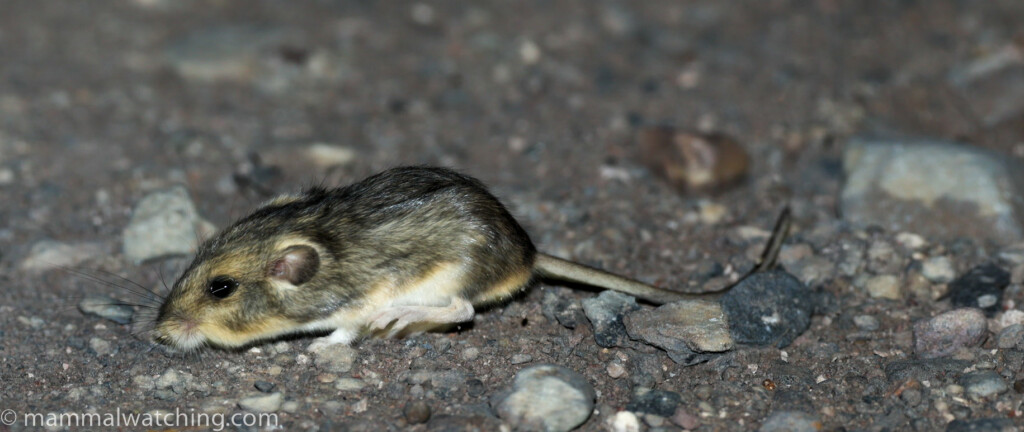
Silky Pocket Mouse, Perognathus flavus
I spent a weekend in Arizona last month. I went to visit my son Patrick, who is in Flagstaff for the summer chasing a two-legged mammal. Purely by coincidence, of course, there were some rodents nearby that I simply had to look for.
We spent the weekend in the small town of Springerville, at two sites that Jose Gabriel Martinez put me onto.
Springerville
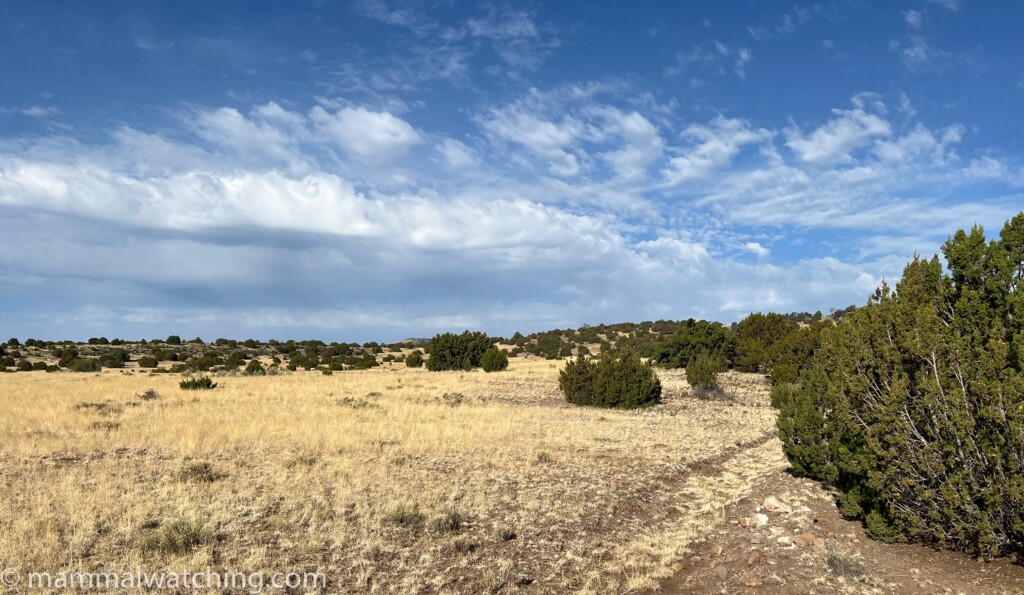
Mexican Woodrat habitat
We spent a night looking around grassland and open forest just outside Springerville. Jose recommended this spot as a place to see Banner-tailed Kangaroo Rats and Mexican Woodrats.
We saw several Banner-tailed Kangaroo Rats along the road. Their large communal burrows were slightly raised and bare of vegetation, with multiple entrance holes. We saw half a dozen animals, nearly always very close to their burrows. They dashed underground when the spotlight hit them. No photos but good views of this large kangaroo rat with a distinctive tail.
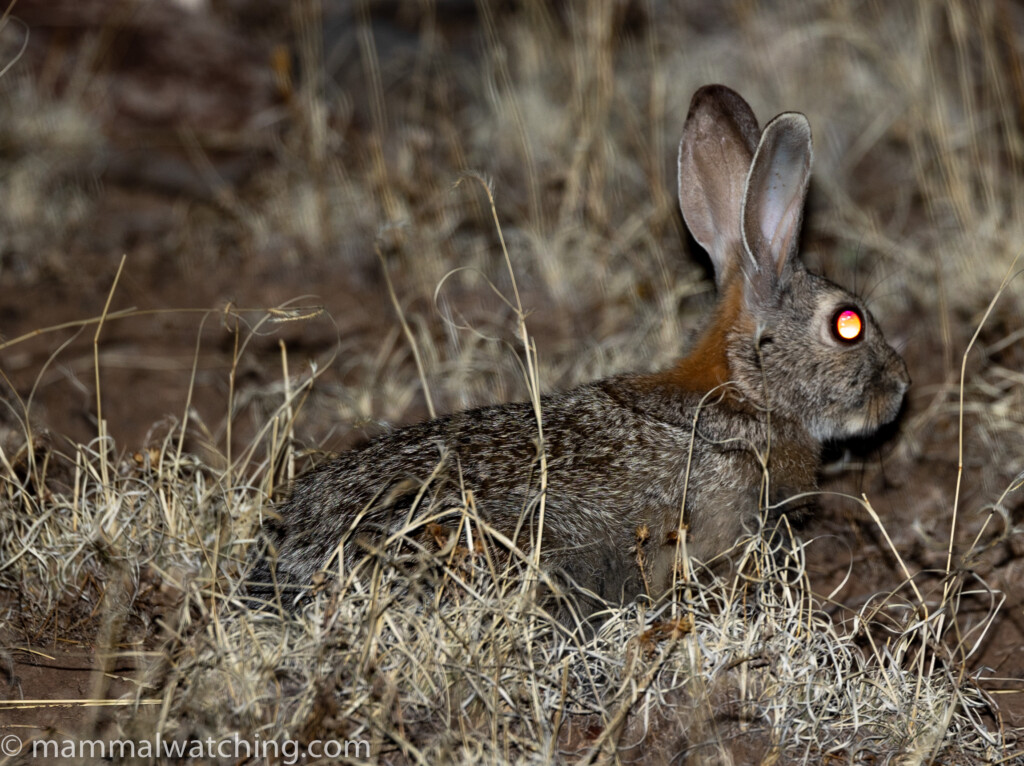
Desert Cottontail, Sylvilagus audubonii
There were numerous tiny mice dashing through the short grass, that were fairly easy to spot with the thermal scope. Those I got a decent look at were all Silky Pocket Mice: Jose had said they are common here. This one froze conveniently in the open and Patrick caught it by hand.
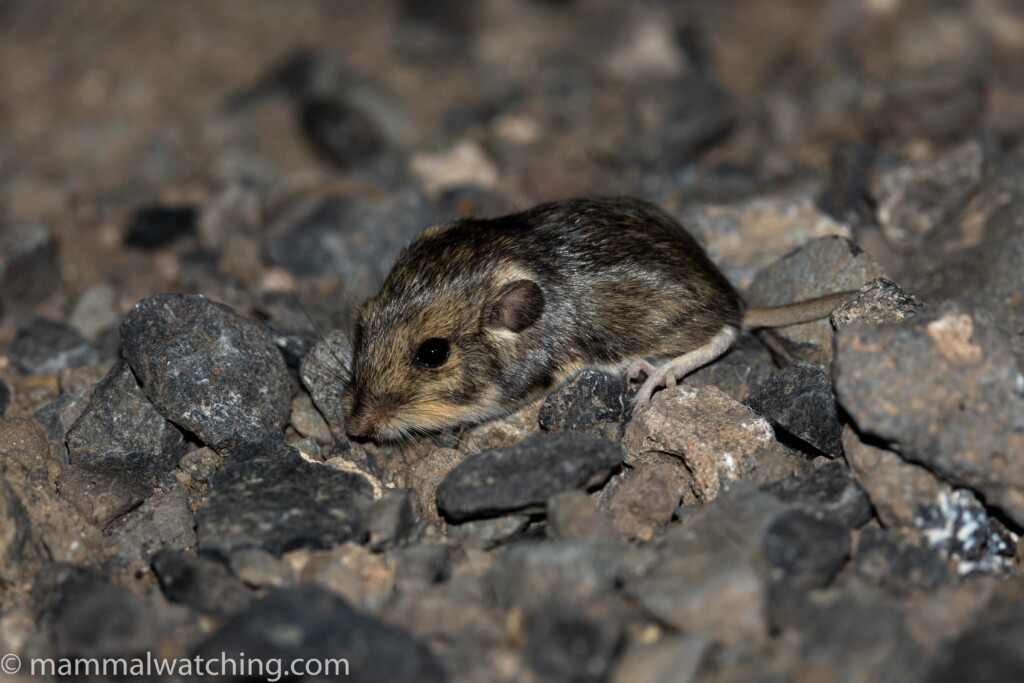
Silky Pocket Mouse, Perognathus flavus
A tiny mouse, one of the smallest in North America, and my first good view of this species.
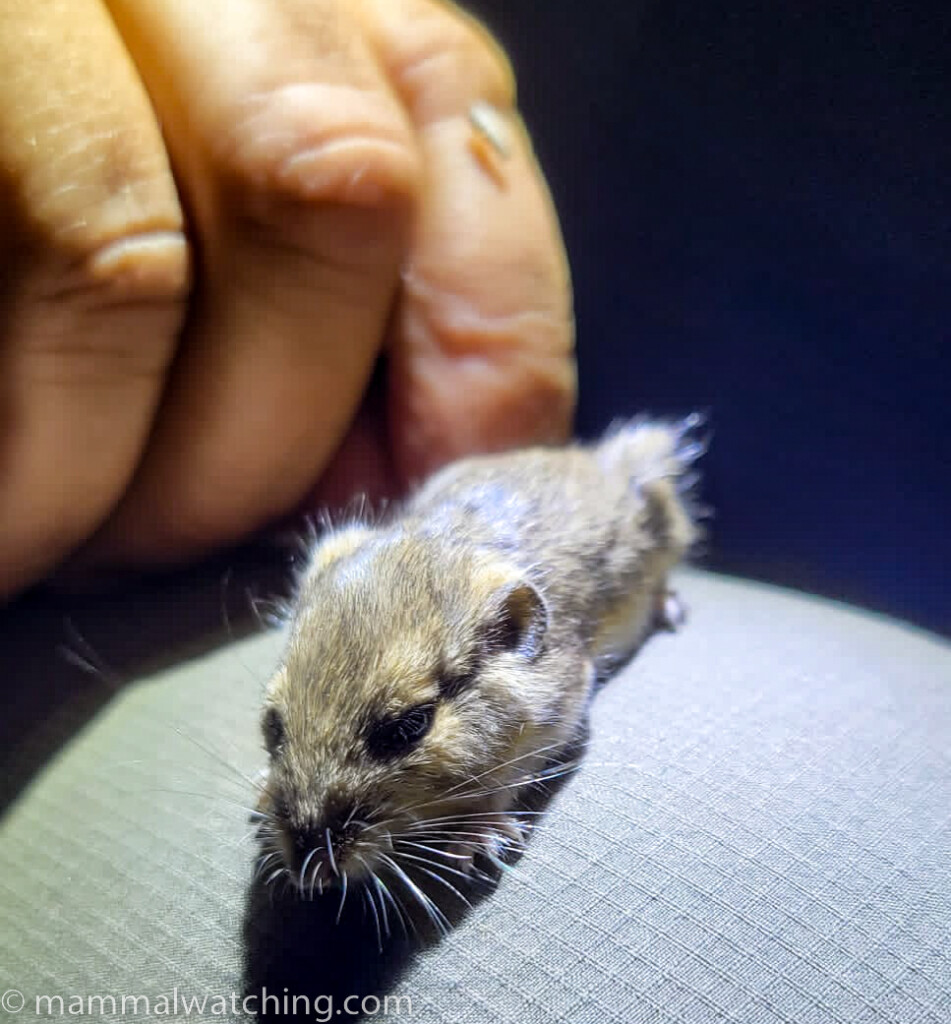
Silky Pocket Mouse, Perognathus flavus
Wandering around for an hour or so with a thermal scope among the trees at the end of the track produced more Silky Pocket Mice as well as several (probable) woodrats at the bottom of – or low down in -trees. I say “probable” because I often find it quite hard to gauge size through a thermal scope and I wasn’t able to find any woodrats with my flashlight. They all seemed to melt into the undergrowth when I turned the light on them.
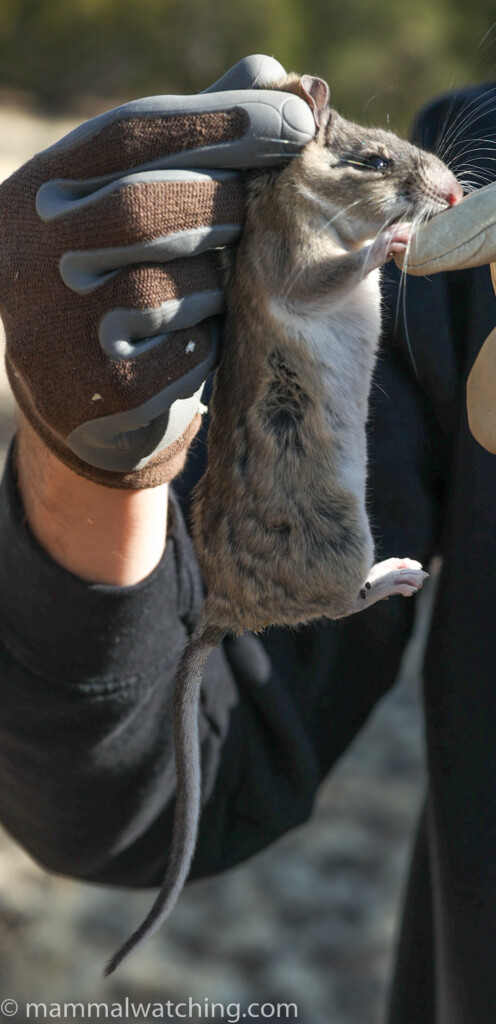
Mexican Woodrat, Neotoma mexicana
But we set Sherman traps and the next morning caught one Mexican Woodrat. When I got back to the hotel and my field guide I realised I should have checked the base of the throat fur to ensure the roots were grey, not white: this is the way to rule out a small Western White-throated Woodrat. I started fretting. I messaged Jose. He talked me down off the ledge, reassuring me that he had caught a bunch of Mexican Woodrats here. And he had only caught Mexican Woodrats. So I was almost able to relax. Almost.
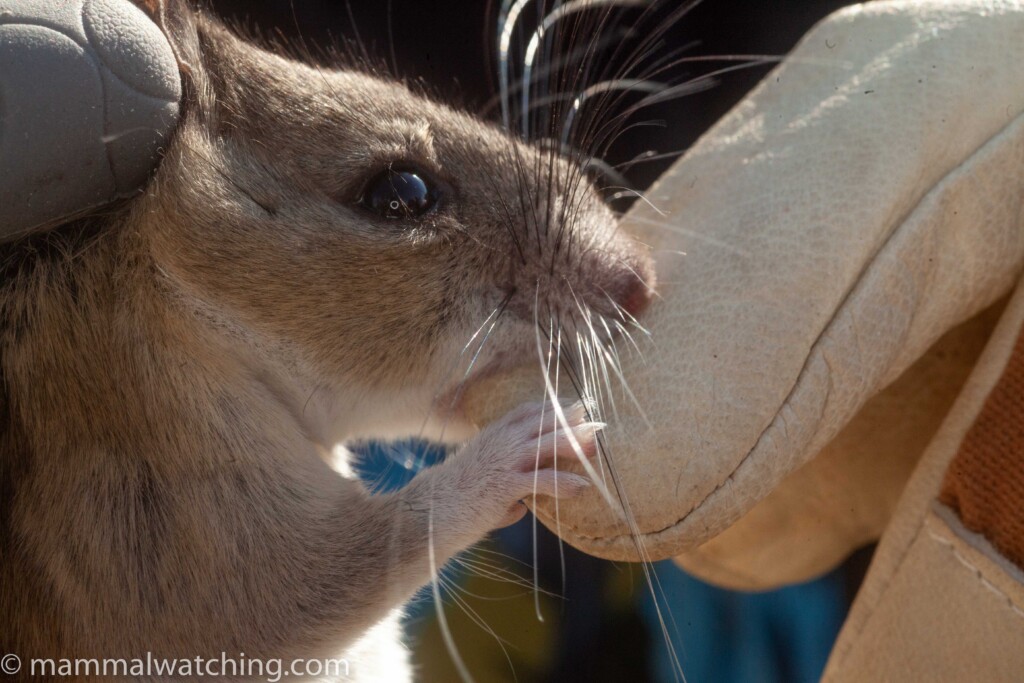
Mexican Woodrat, Neotoma mexicana. Photo Patrick Hall
I was also almost able to convince myself I could see some grey roots in the chest fur too. Almost. But on the strong balance of probabilities given previous captures it seems this is a Mexican Woodrat.
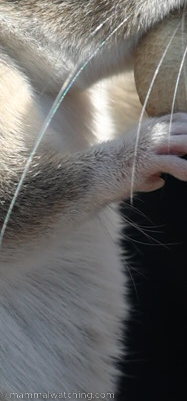
Spot the grey roots …
The deer mice were more problematic, not helped by the fact that we took down measurements of several animals on a phone, but I don’t remember whose phone and now I cannot find the measurements. So my ID’s are mainly based on these pictures and in particular each animal’s ear size, with a bit of relative tail-length thrown in. Though we did check the measurements as we went along and they aligned with the following species.
The first is a Western Deer Mouse: small ears and a short tail.
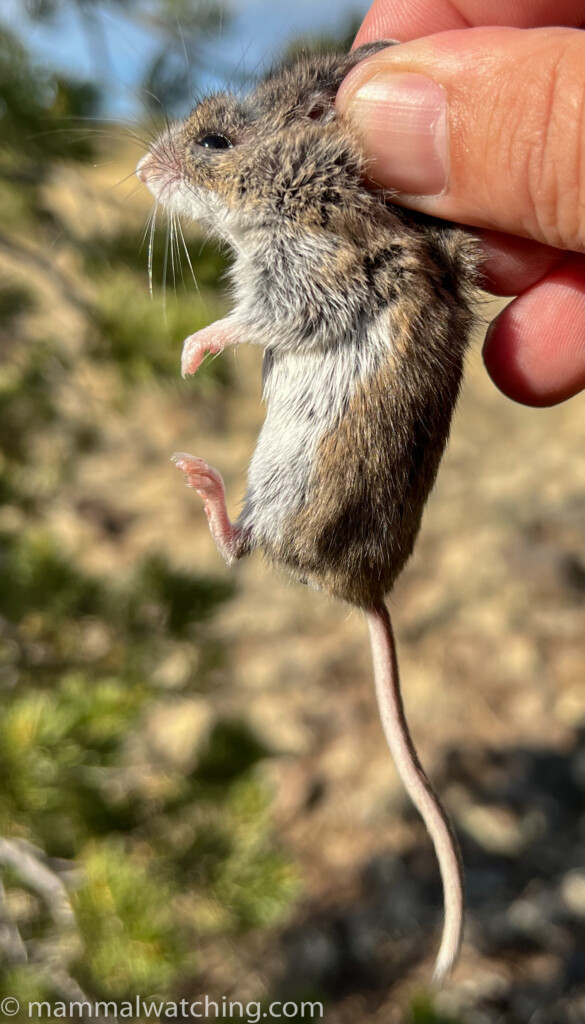
Western Deermouse, Peromyscus.sonoriensis
This, with larger ears looks like a Brush Mouse.
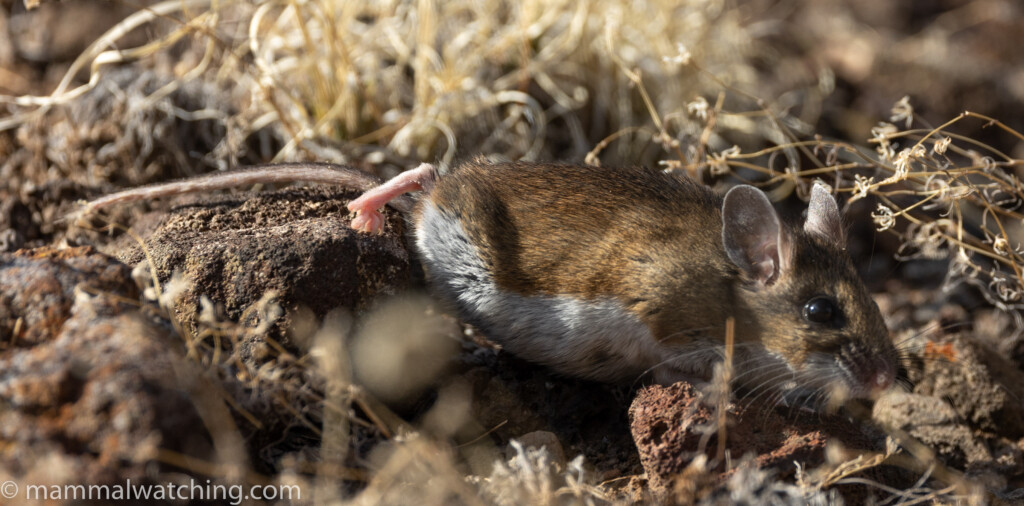
Brush Mouse, Peromyscus.boylii
The following photos are from two animals. Both look like Northern Rock Mice, a species I had not seen in the USA before (though I have in Mexico). The ears seem too big to be anything but a Rock or a Pinyon Mouse (both of which have been caught here). They don’t seem big enough for a Pinyon Mouse to Jose or me. The tail looks to be about head-body length, perhaps a bit longer which also makes me lean towards Northern Rock Mouse. Though the fur colour – in some pictures at least – seems to be a better fit for Pinyon Mouse.
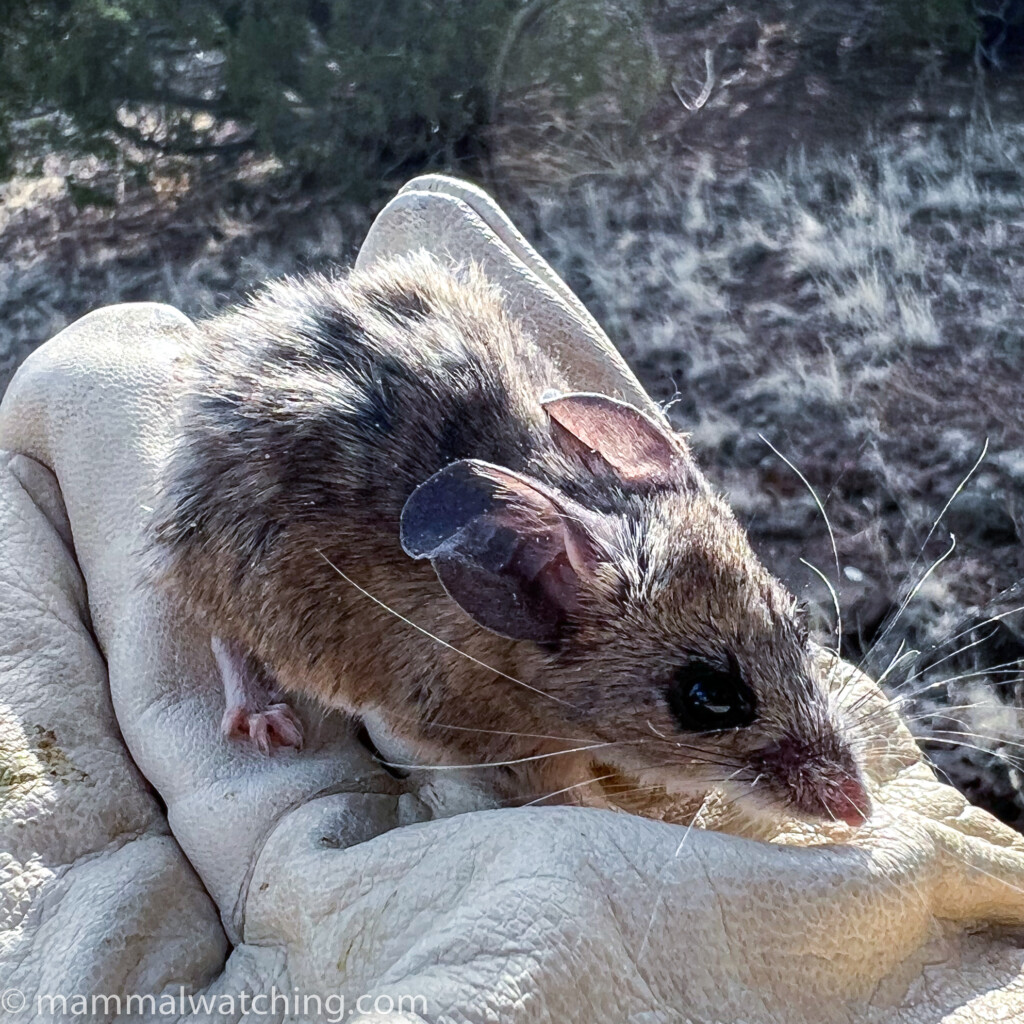
Northern Rock Mouse, Peromyscus nasutus
Here are several photos. If someone more expert than me has an opinion please let me know.
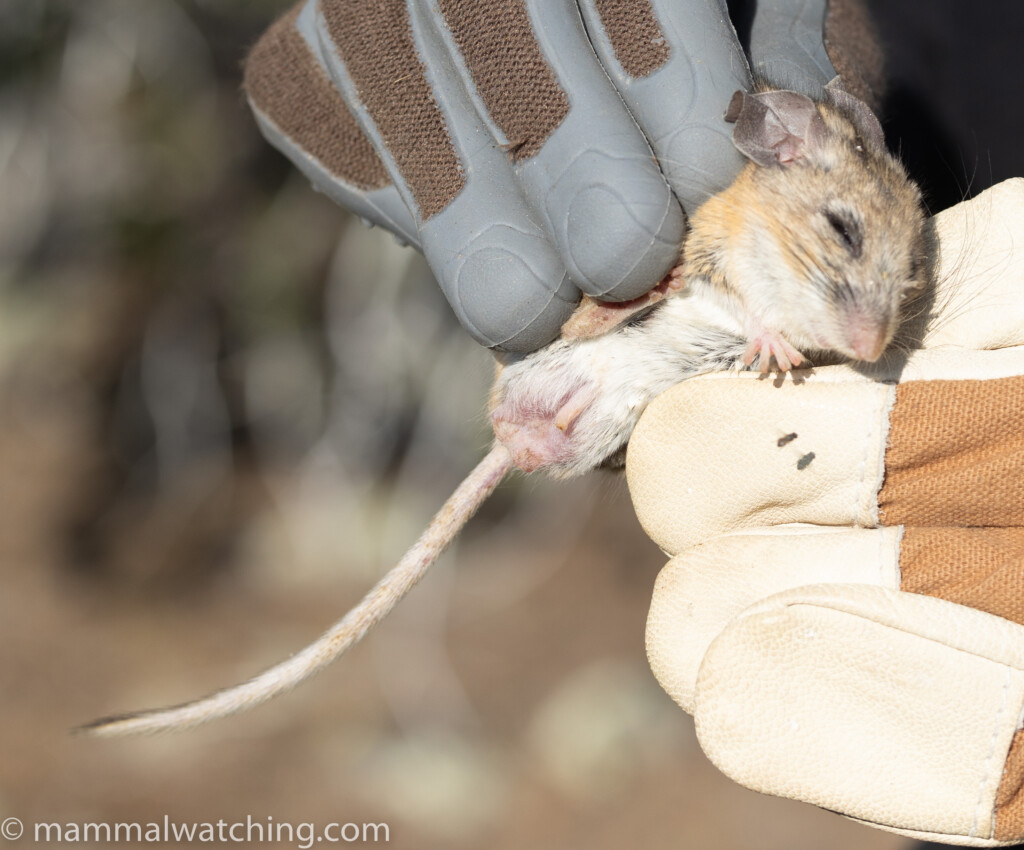
Northern Rock Mouse, Peromyscus nasutus
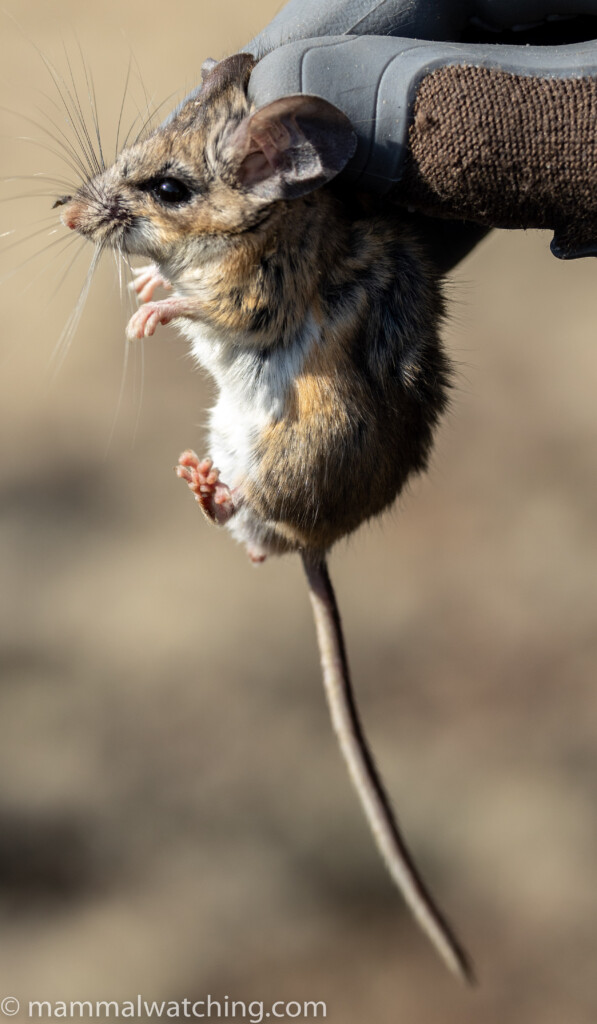
Northern Rock Mouse, Peromyscus nasutus
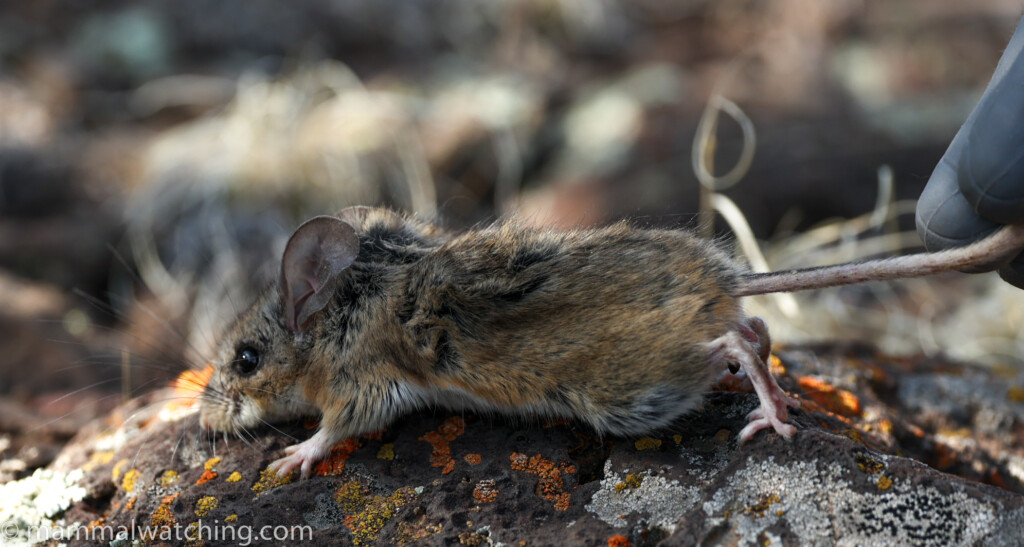
Northern Rock Mouse, Peromyscus nasutus
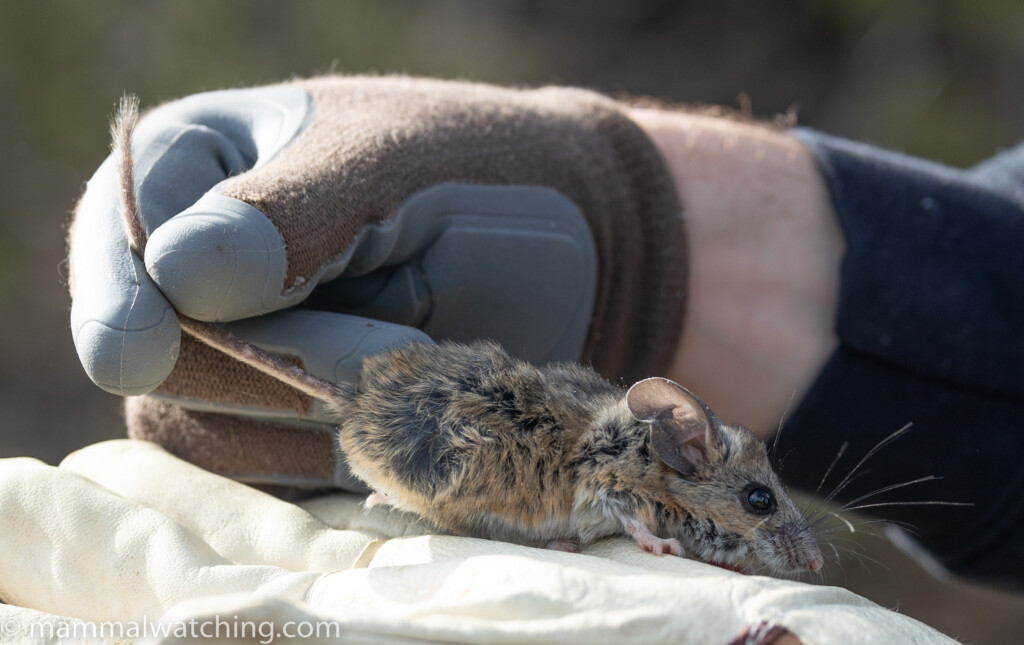
Northern Rock Mouse, Peromyscus nasutus
We also saw Gunnison’s Prairie Dogs, Black-tailed Deer and Pronghorn in the area.

Pronghorn, Antilocapra americana
Reserve, New Mexico
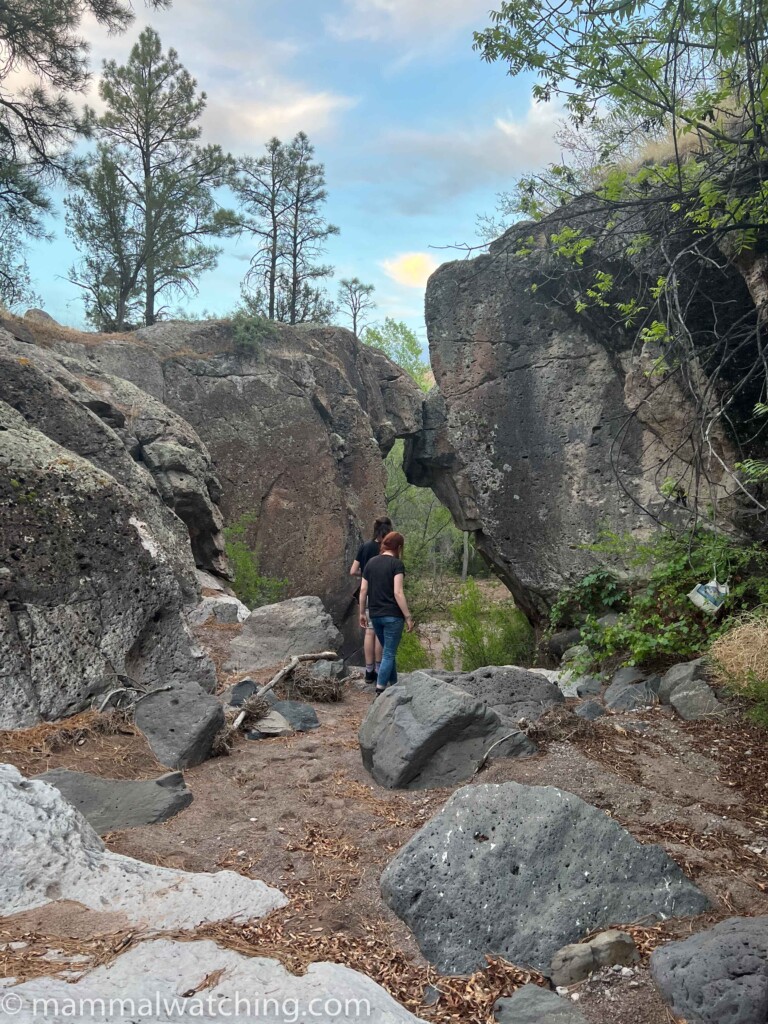
Patrick and Kylie in Stephen’s Woodrat habitat
The next evening we drove for an hour or so and crossed the New Mexico border to reach a spot close to the small town of Reserve. This too was a site that Jose Gabriel had recommended: he had seen several Stephen’s Woodrats along a dry river bed here.
An hour at dusk produced one woodrat (that for once I found without the help of a thermal scope).
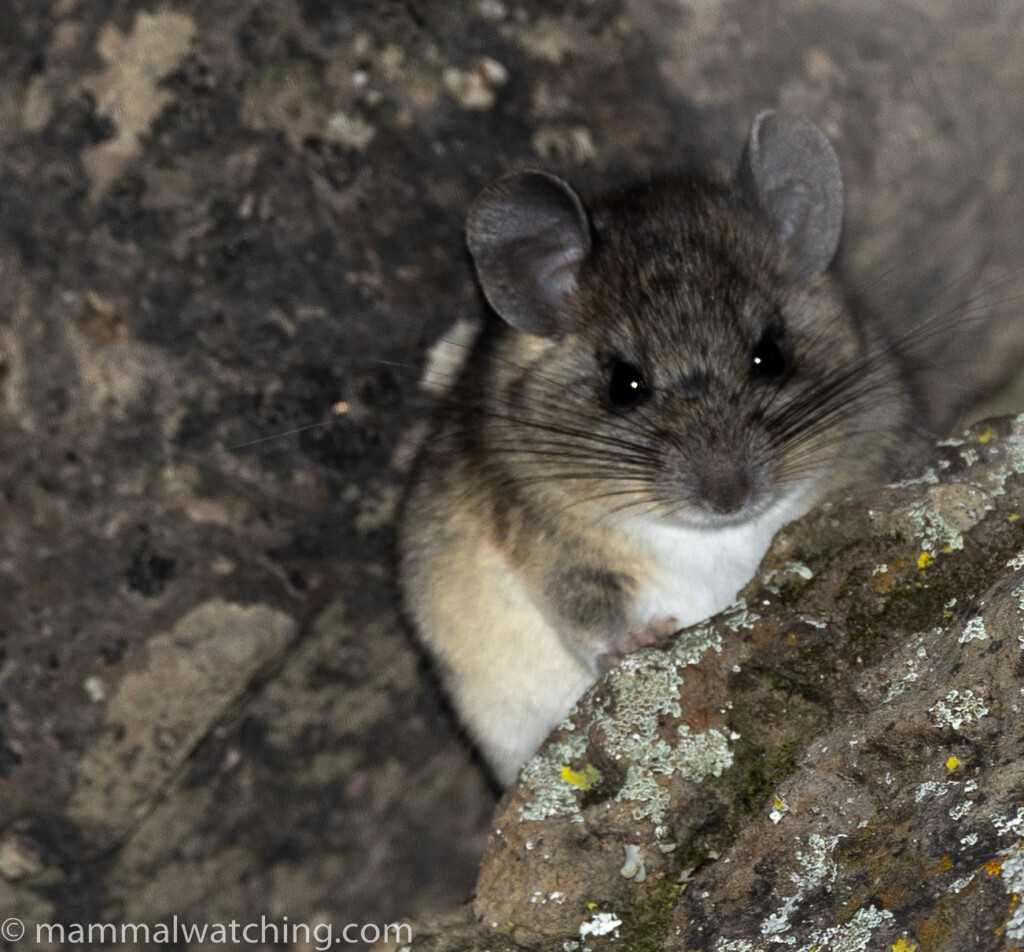
Probably Stephen’s Woodrat, Neotoma stephensi
The animal was in a crack in the rockface bordering the creek, just before the river bed drops by 20 meters down a very steep incline. It did not show its tail tip, which I needed to see in order to identify it accurately. It was not a large woodrat and it was most likely Stephen’s Woodrat, but I cannot be sure from this photo as Jose has also seen Bushy-tailed Woodrats in the area.
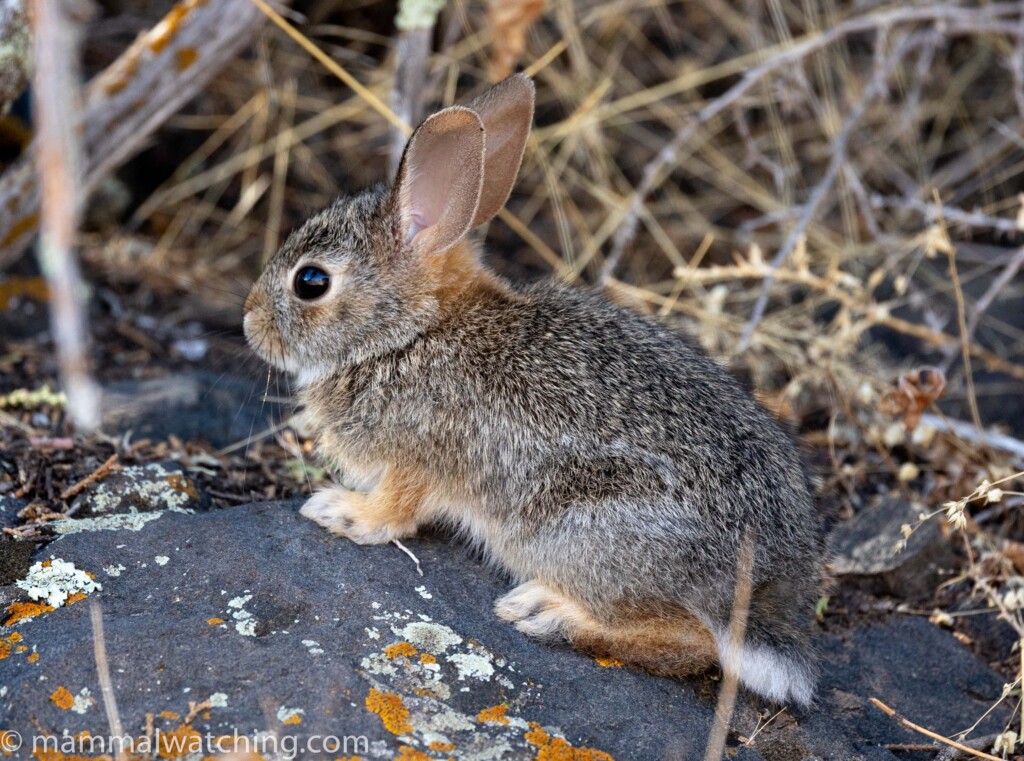
Mountain Cottontail, Sylvilagus nuttallii
Other mammals that evening and the next morning included plenty of Elk along the road (one of which we helped released from a fence it was tangled up in), an Abert’s Squirrel (along the road), a Mountain Cottontail and another Brush Mouse at the woodrat site.
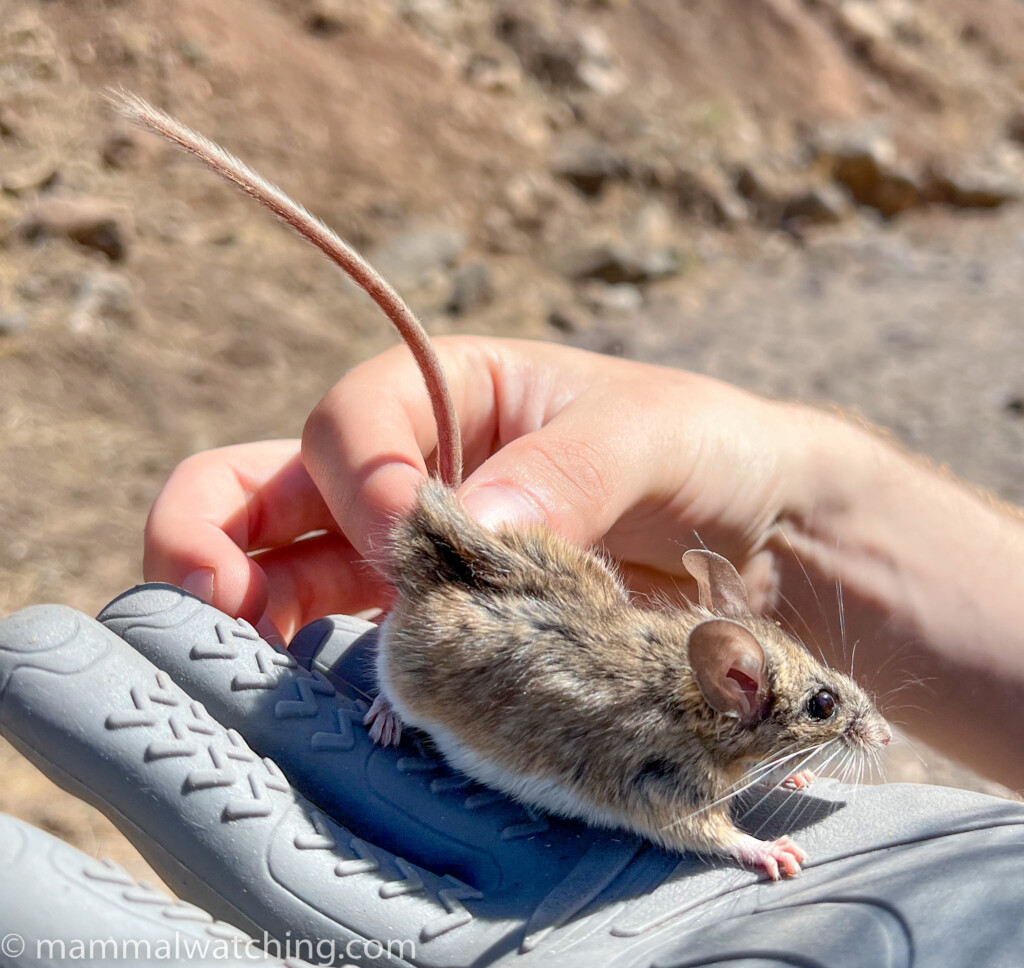
Brush Mouse, Peromyscus boylii
Thanks to Jose for all the detailed site info and to Patrick and Kylie for their help and company.
Trip List
LEPORIDAE
Desert Cottontail (Sylvilagus audubonii)
Mountain Cottontail (Sylvilagus nuttallii)
SCIURIDAE
Abert’s Squirrel (Sciurus aberti)
HETEROMYIDAE
Silky Pocket Mouse (Perognathus flavus)
Banner-tailed Kangaroo Rat (Dipodomys spectabilis)
SCIURIDAE
Gunnison’s Prairie Dog (Cynomys gunnisoni)
CRICETIDAE
Mexican Woodrat (Neotoma mexicana)
Stephen’s Woodrat (Neotoma stephensi) (?)
Brush Mouse (Peromyscus boylii)
Northern Rock Mouse (P.nasutus)
Western Deermouse (P.sonoriensis)
CERVIDAE
Wapiti (Cervus canadensis)
Mule Deer (Odocoileus hemionus)
ANTILOCAPRIDAE
Pronghorn (Antilocapra americana)
1 Comment
Leave a Reply
You must be logged in to post a comment.


Conuropsis
NIce as always Jon. Need specific locals though:-)
Andrew